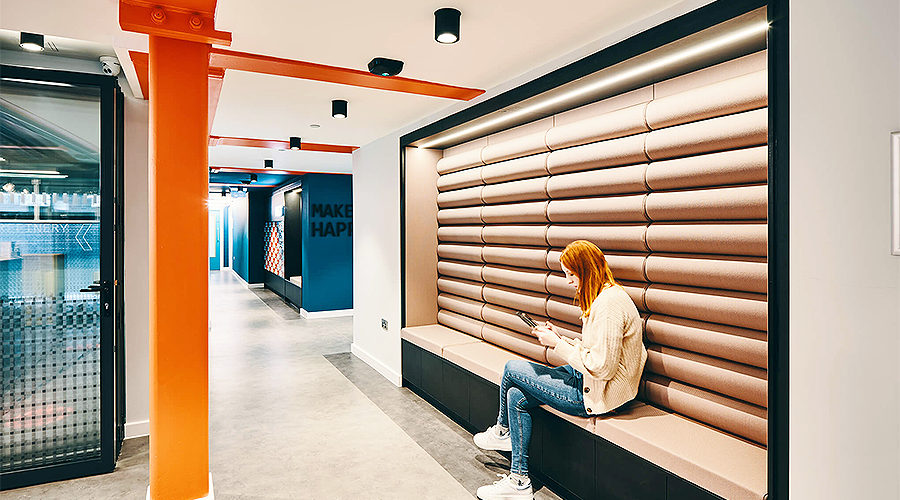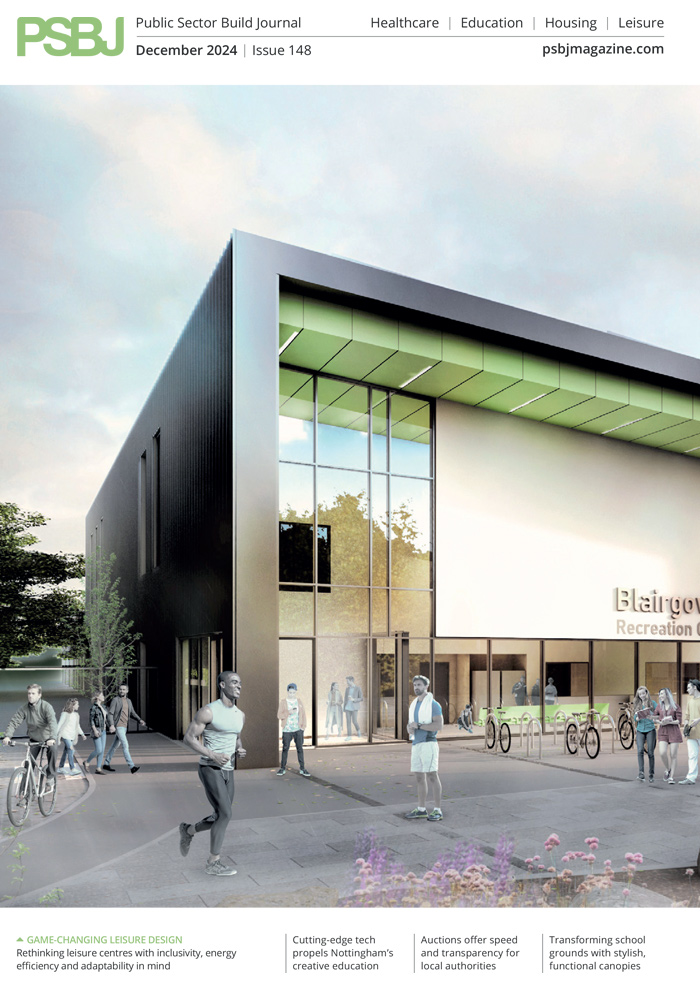Faced with a range of issues impacting their operation and maintenance, leisure buildings are constantly navigating challenges to continue to provide essential services to communities. In this article, PSBJ speaks with Chris Anderson, Technical Manager from Ansell Lighting, about how modernising outdated lighting systems can help to overcome many of these hurdles.
Ansell Lighting
An integral part of everyday life, public leisure buildings provide vital space for recreation, education and socialisation. But, faced with a lack of funding, spiralling running costs, sustainability pressures and strict health and safety requirements, the challenges faced by local authorities to keep public sector leisure buildings in operation are quite formidable.
However, one area where tangible changes can be made is the modernisation of lighting infrastructure. It is widely accepted that lighting is responsible for up to 40% of a building’s overall electricity consumption so, by investing in more efficient lighting solutions, energy consumption can be significantly lowered, enhancing sustainability and cost effectiveness, too.
One very simple yet effective solution building operators can make is to ensure all existing lighting sources are switched to energy-efficient LEDs (light-emitting diodes). Using 90% less energy than incandescent bulbs and half as much as compact fluorescents, LEDs offer tangible energy savings and cost just a fraction of the price to use. For example, a 60-watt halogen light bulb costs roughly £2.50 to operate for an hour per day each year, whilst an LED will cost just 40p for the same amount of time.
Taking energy preservation one step further, implementing a smart lighting system, alongside the use of LEDs, will optimise energy use even further. A well-planned system – the most energy-efficient lighting option available – is capable of further cutting energy consumption by up to two thirds, contributing significantly to sustainability goals and operational efficiency.
In addition to the efficacy of the actual fittings and lighting system itself, smart lighting combines automation, connectivity and intelligent control to provide incomparable energy optimisation. Every single detail of a connected lighting system can be programmed, automated or sensor controlled, ensuring energy is only ever used where and when it is needed. This is particularly useful in spaces that may be used sporadically during the day, such as in changing rooms or bathroom facilities, and ensures that lighting will not be left on unnecessarily or reliant on the manual ‘flip of a switch.’
Smart technology can be applied across both indoor and outdoor lighting circuits, optimising energy use throughout every area of the building portfolio. From the timings of operation to the colour, brightness, intensity and combinations of lamps in use, the output of every individual light fitting within a building can be controlled to the most minute detail, meaning that energy use is controlled to this exact level, too.
In addition to cutting energy use and costs, smart lighting can also offer an array of functional benefits, making spaces more welcoming and functional for the community.
One such benefit is enhanced safety and security. Alongside automating lighting to come on when darkness falls in external spaces, such as car parks or external walkways, smart lighting can be combined with daylight harvesting fittings to further regulate energy use. Offsetting natural daylight against electric lighting to achieve targeted levels of illumination, it make spaces safer to navigate during hours of dusk or daybreak whilst only using the exact amounts of energy required. Similarly, automated lighting schedules can be used to simulate the appearance of an occupied space if it is vacant, deterring potential intruders.
Colour temperatures and lighting hues can also be individually set to create specific moods and ambiences as required. For example, in busy gyms and workout areas, lighting can be set to an energising cool, white tone to invigorate and motivate users, while in reading or crafting areas, warmer tones can be set to enhance concentration and create a cosy atmosphere. This level of customisation allows public sector leisure buildings to cater to the diverse needs and activities of their users, enhancing their overall experience and satisfaction. Smart lighting systems are incredibly user friendly, so any required changes can be easily made. Systems are simply controlled via remote control, app, voice or by using an ecosystem such as Hey Google or Amazon Alexa.
For those responsible for building maintenance, smart lighting offers many practical benefits. Dashboard controls can be used alongside the technology to carry out remote luminaire testing, highlighting any individual luminaires or drivers that are broken or unoperational. These monitors also provide a visual display of a building’s lighting system in real time, providing information about usage and further opportunities to reduce unnecessary wastage.
Modernising lighting installations in public sector leisure buildings can have a real impact on ongoing operational and maintenance challenges and is something all organisations should explore. Helping to achieve reduced energy bills, improved efficiency and sustainability, the innovative technologies will support operators to continue to provide their essential services effectively.










